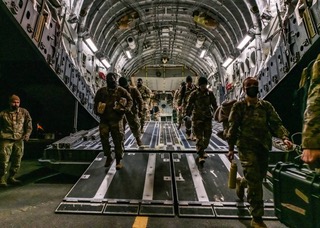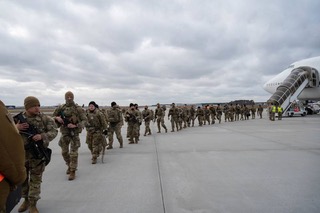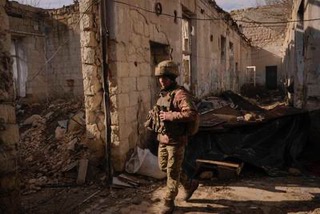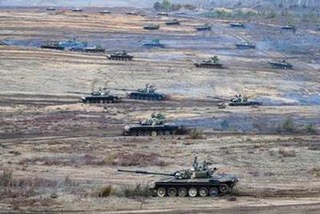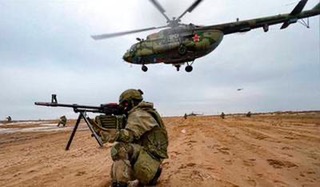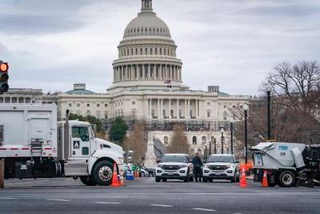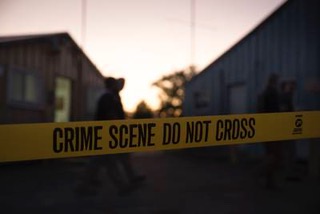Joining 6,000 troops already activated in Germany, Poland and Hungary, the Defense Department announced Tuesday that a spate of combat aircraft and infantry troops will head to the Baltics and Poland.
They include:
- 800 soldiers from an Italy-based infantry battalion task force to the Baltic states
- Up to eight Air Force F-35 strike fighters from Germany to the Baltics, as well as an unspecified location on NATO’s southeastern flank
- An attack aviation battalion with 20 AH-64 Apache helicopters, from Germany to the Baltics
- An attack aviation task force with 12 Apaches from Greece to Poland
“These additional personnel are being repositioned to reassure our NATO allies, deter any potential aggression against NATO member states, and train with host-nation forces,” according to a senior defense official.
The announcement came after President Joe Biden detailed new economic sanctions on Russia in reaction to Russian Vladimir Putin’s decision to move new military forces into separatist-held parts of Ukraine.
“Who in the Lord’s name is Putin to think it gives him the right to declare new so-called borders on territory that belong to his neighbors?” Biden said. “This a flagrant violation of international law and demands a firm response from the international community.”
Biden said the United States “will continue to provide defensive assistance to Ukraine” as Russian forces advance, but reiterated that “we have no intention of fighting Russia.”
However, he said that American military forces will continue to work with NATO allies on how to diffuse the situation and defend their borders.
“We want to send an unmistakable message that the United States together with our allies will defend every inch of NATO territory and abide by the commitments we made into NATO,” he said. “We still believe that Russia is poised to go much further in launching a massive military attack against Ukraine. I hope we’re wrong about that.”
NATO forces are on heightened alert as Russia sends troops into parts of eastern Ukraine, but the response force hasn’t been activated, NATO Secretary General Jens Stoltenberg told reporters on Tuesday.
The multinational, 40,000-troop force is ready to respond to aggressive actions on Russia’s part, along with thousands of U.S. troops who have been put on shortened prepare-to-deploy orders.
“So far we have increased the readiness of the NATO Response Force, but we’re not deployed,” Stoltenberg said during a press conference.
Instead, individual countries have activated their own troops on an ad-hoc basis. That includes 5,000 troops from Fort Bragg, North Carolina, who headed to Germany and Poland earlier this month, and another 1,000 mobilized from Germany to Romania.
At the same time, Stoltenberg said, Germany has sent troops to Lithuania, the United Kingdom has doubled its troops in Estonia.
“And other allies ― including Spain, the Netherlands, Denmark, and many others ― have decided to send in troops ships and planes to reinforce our presence,” he added.
RELATED
Leaders from Lithuania, Latvia and Estonia met with Vice President Kamala Harris in Munich on Friday, calling for more support to the Baltic countries.
“We welcome the decisions already made by the U.S. administration to deploy additional forces in Europe. And we also hope that you increase the presence in the Baltic countries,” Estonian Prime Minister Kaja Kallas said Friday.
And while visiting a small number of U.S. troops deployed to Lithuania on Saturday, Defense Secretary Lloyd Austin declined to say whether he was considering sending more troops to the Baltic state.
“I don’t have any ... announcements to make today in terms of troop presence,” Austin told reporters during a press conference in Vilnius. “But as I said, I’ve been saying all long, we will continue to assess situations and consult with our allies.”
Stoltenberg said the risk of a “full-scale” assault on Ukraine remained high as Russian troops surrounding the country appeared “out of the camps and in attack positions.” That assessment expands the scope of a potential conflict beyond the Russia-supported breakaway provinces of Luhansk and Donetsk in the eastern Ukraine.
Russian President Vladimir Putin’s government recognized the regions’ affiliation with Moscow on Monday, drawing the ire of the international community.
Shortly after Stoltenberg’s press conference on Tuesday, Russian news reports began trickling in that Putin’s independence proclamation would cover the entirety of the respective provinces, parts of which are still under Ukrainian control, setting up the prospect of intensified combat along the contact line splitting the region.

